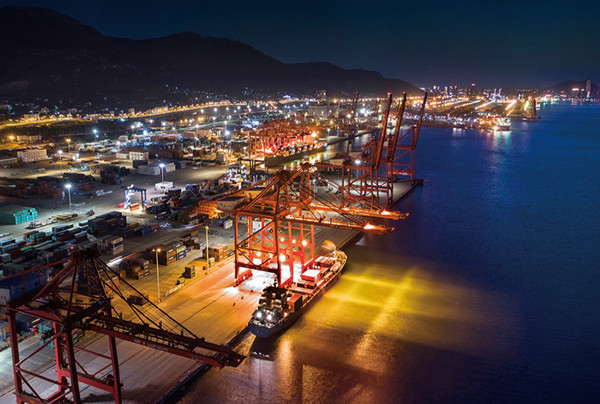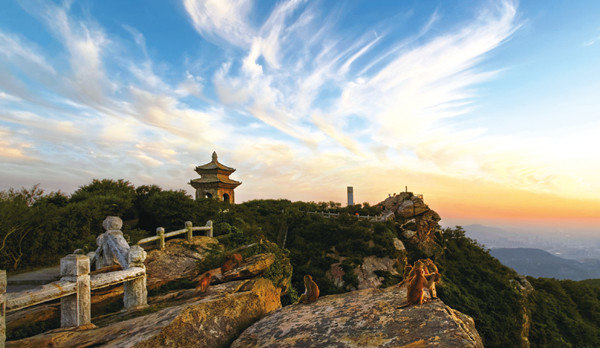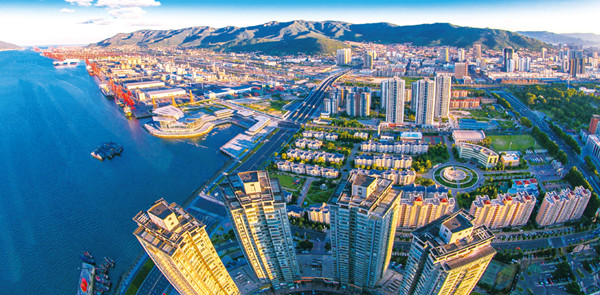Lianyungang
Lianyungang, formerly known in the West as Haichow, was one of the four original ports opened up for foreign trade in the 1680s by the Qing Dynasty (1644-1911) government. It is now a prefecture-level port city in the middle of China's east coast in northeastern Jiangsu province.
Facing east to Japan and across the sea South Korea, Lianyungang connects the Land Bridge Economic Belt in the west, links the Yangtze River Economic Circle to the south, and Shandong Peninsula city clusters to the north.
The city's name derives from Lian Island (formally Dongxilian Island), the largest island in Jiangsu province which lies off its coastline, and Yuntai Mountain, the highest peak in Jiangsu, a few miles from its downtown area.
Covering a land area of 7,615 square kilometers and a sea area of 6,677 sq km, Lianyungang has three districts and three counties under its administration, and the local registered population was 5.34 million by the end of 2020.

Lianyungang Port at night [Photo/lyg.gov.cn]
Economy
In 2020, the city's economic development progressed steadily and the regional GDP exceeded 327.71 billion yuan ($50.37 billion). Investment in fixed assets increased by 7 percent year-on-year and retail sales of consumer goods went up by 5.2 percent. Foreign capital in actual use amounted to $700 million and the value of foreign trade in imports and exports totaled $9.1 billion.
Lianyungang is at the eastern end of the Longhai Railway, connecting it with Lanzhou in central China. Its port, located in the center of the coastline, links the eastern sea with western land routes. Both Japan and South Korea in the east can be reached economically and conveniently from Lianyungang, strengthening the city's worldwide sea transport network.

Huaguoshan Scenic Spot, the only national 5A scenic spot in Lianyungang [Photo/lyg.gov.cn]
History and Culture
Lianyungang has the remaining ruins of Shaohao of the Xia and Shang dynasties (c.21st century-11th century BC). It was called Yingzhou in ancient times and since then changed into Quxian and Haizhou. The city was the starting point of the ancient Maritime Silk Road during the Tang Dynasty (618-907) and was also an important entrance for Japanese diplomats visiting China during that period.
Confucius once climbed a mountain in Lianyungang to admire the sea landscapes. The First King of Qin also inspected the region during his tour of the eastern part of his empire and built a stone gate there called the Eastern Gate of Qin. Scholar Xu Fu sailed eastwards from Lianyungang in search of elixirs to stay young forever. And Wu Cheng'en, inspired by the picturesque landscapes on Huaguoshan Mountain, created the classic novel Journey to the West.
Tourism
Lianyungang is famous for its Huaguoshan Shuiliandong (花果山, 水帘洞) scenic spot. Shuiliandong literally means the "water curtain hole". The spot was the home of Sun Wukong, also commonly known as the Monkey King from the epic novel Journey to the West. In this hole underneath the mountain is where he and his monkey followers lived.

A panoramic overview of Lianyungang [Photo/lyg.gov.cn]


 Jiangsu, Our home away from home
Jiangsu, Our home away from home
